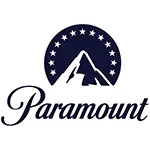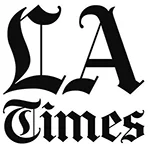 Stan Steinreich |
I am a confessed news junkie! Nothing is as exciting as getting my morning stack of newspapers and thumbing through the pages with a hot cup of coffee and CNN in the background.
So, it is with great sadness that I read of the further staff amputations – mutilation may be a better word for it – at the New York Daily News. When I was a journalist covering metro stories for the New York Times, it was always the tabloid folks, from the Daily News and New York Post who seemed to swoop in, know every cop and firefighter, and be able to get on the other side of the police tape first. Those of us from the papers on the other side of the tracks (New York Times) had to be far more enterprising in those days to get the real scoop. The tabloids also had multiple street editions in those years, so they could update a story several times during the night.
Here we are, mourning the slow death of one of America’s great news institutions. The paper that gave rise to Jimmy Breslin, Liz Smith and many others, is now a skeletal version of itself. They had the best photojournalists in the business and headline writers who would duke it out with The Post every day.
But while we watch the bleeding of the Daily News, I can’t help but ponder why some traditional news organizations thrive in today’s environment and others just can’t make it.
The Wall Street Journal went from being a niche financial newspaper that most executives got mailed to their offices every day, to an absolute powerhouse of general, financial, business and lifestyle news delivered through multi-platforms. The New York Times, the slowest to recognize the power of new media, is thriving today. Jeff Bezos deserves kudos for breathing new life into the Washington Post. Lest I forget, even the New York Post is doing better today. It smartly re-defined its portfolio, investing heavily in sports, gossip and local coverage.
What these successful news organizations have done is grown, not shrink. All media companies are faced with similar challenges – less people paying for their news today – but instead of cutting swatches of staff, they invested in the news product and in recruiting more journalists. More, richer content was added in each of the cases I outline above, and that is why they are doing well. There is no shortcutting the formula – invest to survive and flourish, cut costs and you will die.
I am writing this column from our offices in High Point, North Carolina (we are the largest PR firm in the home furnishings category and this is home base for that industry). The High Point Enterprise, the local daily, has an editorial staff you can count on one hand. Down the road in Greensboro, the News & Record struggles with an albeit larger but still very small team. The locals here struggle to get in-depth local news these days, most of them relying on television stations, who interestingly enough have more reporters than do the print outlets. But broadcast is still limited. If it bleeds, it leads. Tough to get a city council meeting or board of education story well vetted.
What was Tronc thinking? When you cut editorial staff, the essence of the product, you are not merely trimming the bushes, you are pulling them right out of the ground!
***
Stan Steinreich is president and CEO of Steinreich Communications, an international PR firm with offices in New York, Washington, Los Angeles, Tel Aviv, London, Frankfurt and High Point


 Trump Media & Technology Group today reported a $58.2M net loss on $4.1M in 2023 revenues, a disclosure that drove its stock price down 22.6 percent to $47.96.
Trump Media & Technology Group today reported a $58.2M net loss on $4.1M in 2023 revenues, a disclosure that drove its stock price down 22.6 percent to $47.96. Barry Pollack, an attorney at Wall Street’s Harris St. Laurent & Wechsler, has registered Julian Assange as a client with the Justice Dept. “out of an abundance of caution.”
Barry Pollack, an attorney at Wall Street’s Harris St. Laurent & Wechsler, has registered Julian Assange as a client with the Justice Dept. “out of an abundance of caution.” Paramount Global to slash 800 jobs in what chief executive Bob Bakish calls part of an effort to “return the company to earnings growth"... Rolling Stone editor-in-chief Noah Shachtman is exiting at the end of the month due to disagreements with chief executive Gus Wenner over the direction the magazine is taking... The New York Times broke the $1 billion barrier in annual revenue from digital subscriptions in 2023... Press Forward is investing more than $500 million to strengthen local newsrooms.
Paramount Global to slash 800 jobs in what chief executive Bob Bakish calls part of an effort to “return the company to earnings growth"... Rolling Stone editor-in-chief Noah Shachtman is exiting at the end of the month due to disagreements with chief executive Gus Wenner over the direction the magazine is taking... The New York Times broke the $1 billion barrier in annual revenue from digital subscriptions in 2023... Press Forward is investing more than $500 million to strengthen local newsrooms. The majority of news articles are read within the first three days of publication, according to a recent report.
The majority of news articles are read within the first three days of publication, according to a recent report. The Los Angeles Times gives pink slips to 115 people or 20 percent of its newsroom staff... TIME is also laying off about 30 employees, which is approximately 15 percent of its editorial staff... The Baltimore Banner, which was launched by Stewart Bainum in 2022 after he failed to buy the Baltimore Sun, added 500 subscribers per day in the three days following Sinclair Broadcast Group's deal to purchase the Sun.
The Los Angeles Times gives pink slips to 115 people or 20 percent of its newsroom staff... TIME is also laying off about 30 employees, which is approximately 15 percent of its editorial staff... The Baltimore Banner, which was launched by Stewart Bainum in 2022 after he failed to buy the Baltimore Sun, added 500 subscribers per day in the three days following Sinclair Broadcast Group's deal to purchase the Sun.


 Have a comment? Send it to
Have a comment? Send it to 
No comments have been submitted for this story yet.